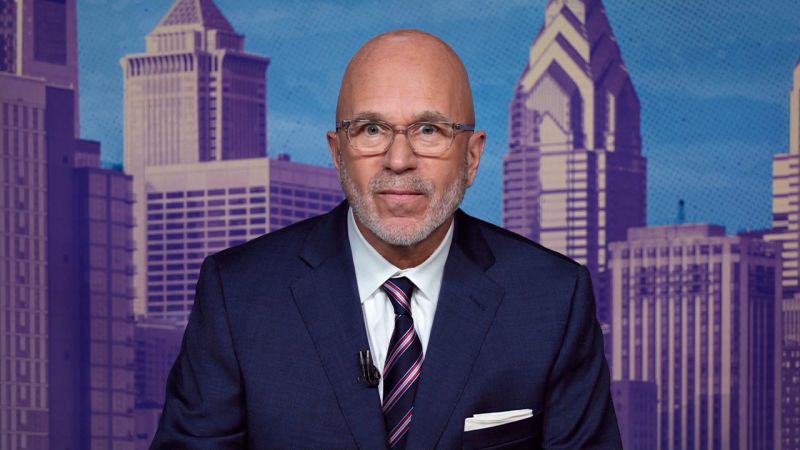Instructions

In a compelling analysis, CNN commentator Michael Smerconish delves into the intriguing dynamics of President-elect Donald Trump's latest cabinet selections. Drawing parallels with his previous administrative choices, Smerconish suggests that Trump's current picks signal a deliberate strategy of potential confrontation and tension within his emerging leadership team.
Smerconish's keen observation highlights the stark differences between Trump's past and present cabinet compositions, hinting at a potentially more provocative and challenging political landscape. By carefully examining the backgrounds and potential interactions of his proposed appointees, the political analyst reveals what could be a calculated approach to governance that thrives on dynamic and potentially conflicting perspectives.
The commentary underscores the unique approach Trump seems to be taking in assembling his team, suggesting that these selections are far from random but instead represent a deliberate method of creating an environment of robust debate and strategic tension.
Trump's Cabinet Conundrum: A Strategic Minefield of Political Appointments
In the ever-evolving landscape of American political leadership, the selection of cabinet members represents a critical moment of strategic positioning and potential conflict. Presidential appointments are more than mere administrative decisions; they are powerful signals of political intent, ideological direction, and potential confrontation.
Navigating the Treacherous Waters of Political Appointments
The Anatomy of Presidential Cabinet Selection
Presidential cabinet selections are intricate chess moves that reveal far more than simple personnel choices. Each appointment represents a complex interplay of political strategy, ideological alignment, and potential future governance approaches. Donald Trump's current cabinet selection process demonstrates a nuanced approach that suggests deliberate provocation and strategic positioning.
The selection process goes beyond traditional political considerations, reflecting a deeper understanding of power dynamics and institutional influence. By choosing individuals who potentially challenge existing power structures, Trump appears to be constructing a cabinet designed to disrupt conventional political narratives and create immediate tension within established governmental frameworks.
Ideological Positioning and Strategic Confrontation
Trump's current cabinet picks signal a deliberate strategy of creating immediate political friction. Unlike his previous presidential tenure, these selections seem calculated to generate controversy and challenge existing institutional norms. Each appointment appears meticulously designed to provoke reaction, challenge established bureaucratic structures, and create an environment of constant political dynamism.
The strategic implications of such appointments extend far beyond immediate personnel changes. They represent a broader approach to political engagement that prioritizes disruption over consensus, challenging long-standing governmental traditions and creating an atmosphere of constant political recalibration.
Psychological Warfare in Political Appointments
The art of cabinet selection transcends mere administrative decision-making. It represents a sophisticated form of psychological warfare, where each appointment sends nuanced messages about potential future policy directions. Trump's selections demonstrate an understanding of how personnel choices can create immediate political tension and reshape institutional expectations.
By selecting individuals known for their controversial perspectives and challenging backgrounds, Trump creates an environment of constant political negotiation. These appointments are not just about filling positions but about creating a dynamic where traditional political boundaries are continuously tested and potentially redrawn.
The Broader Implications of Confrontational Appointments
Trump's current cabinet selection strategy reveals a profound understanding of political momentum and institutional transformation. Each appointment is a calculated risk, designed to challenge existing power structures and create immediate political dialogue. This approach goes beyond traditional political maneuvering, representing a more aggressive and dynamic model of governmental leadership.
The potential consequences of such an approach are far-reaching. By consistently selecting individuals who challenge established norms, Trump creates an environment of constant political recalibration. This strategy ensures that political discourse remains fluid, unpredictable, and fundamentally transformative.
Decoding the Political Chess Match
Understanding Trump's cabinet selection process requires a nuanced perspective that goes beyond surface-level analysis. These appointments represent a sophisticated political strategy designed to generate immediate tension, challenge institutional norms, and create an environment of constant political evolution.
Each selection is a carefully crafted message, communicating not just personnel choices but broader political intentions. By consistently choosing individuals who represent potential confrontation, Trump demonstrates a unique approach to political leadership that prioritizes dynamic engagement over traditional consensus-building mechanisms.

